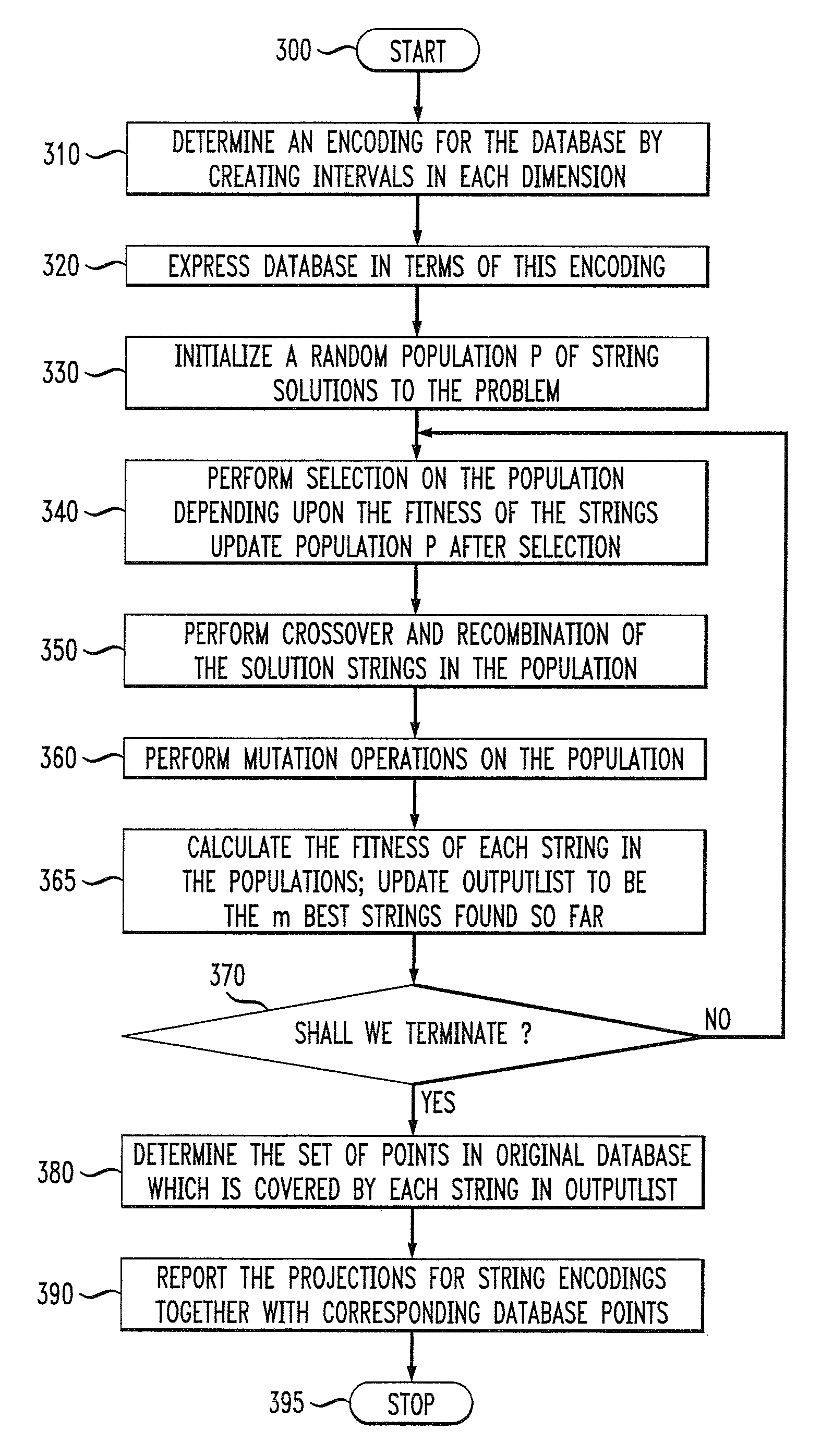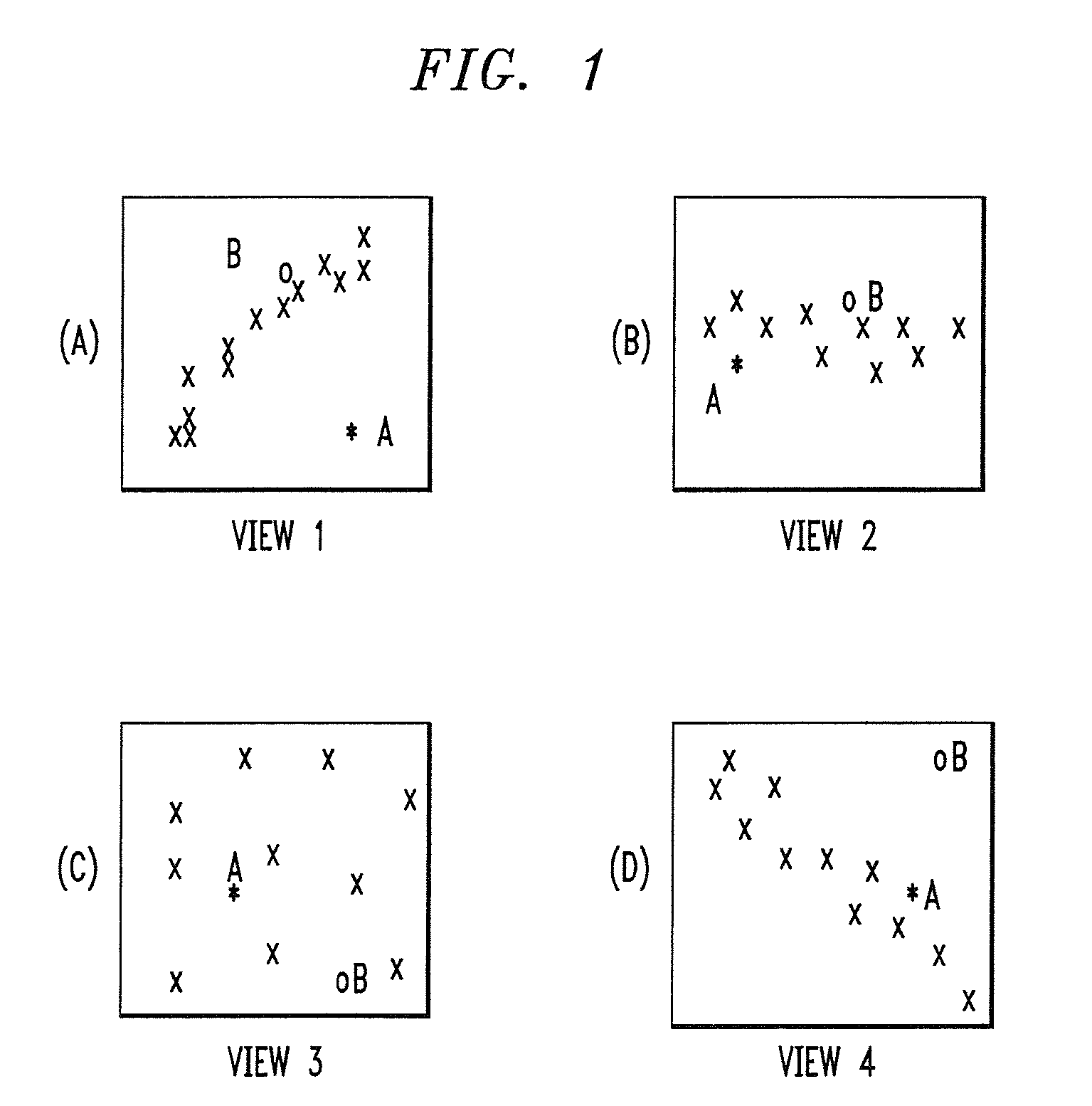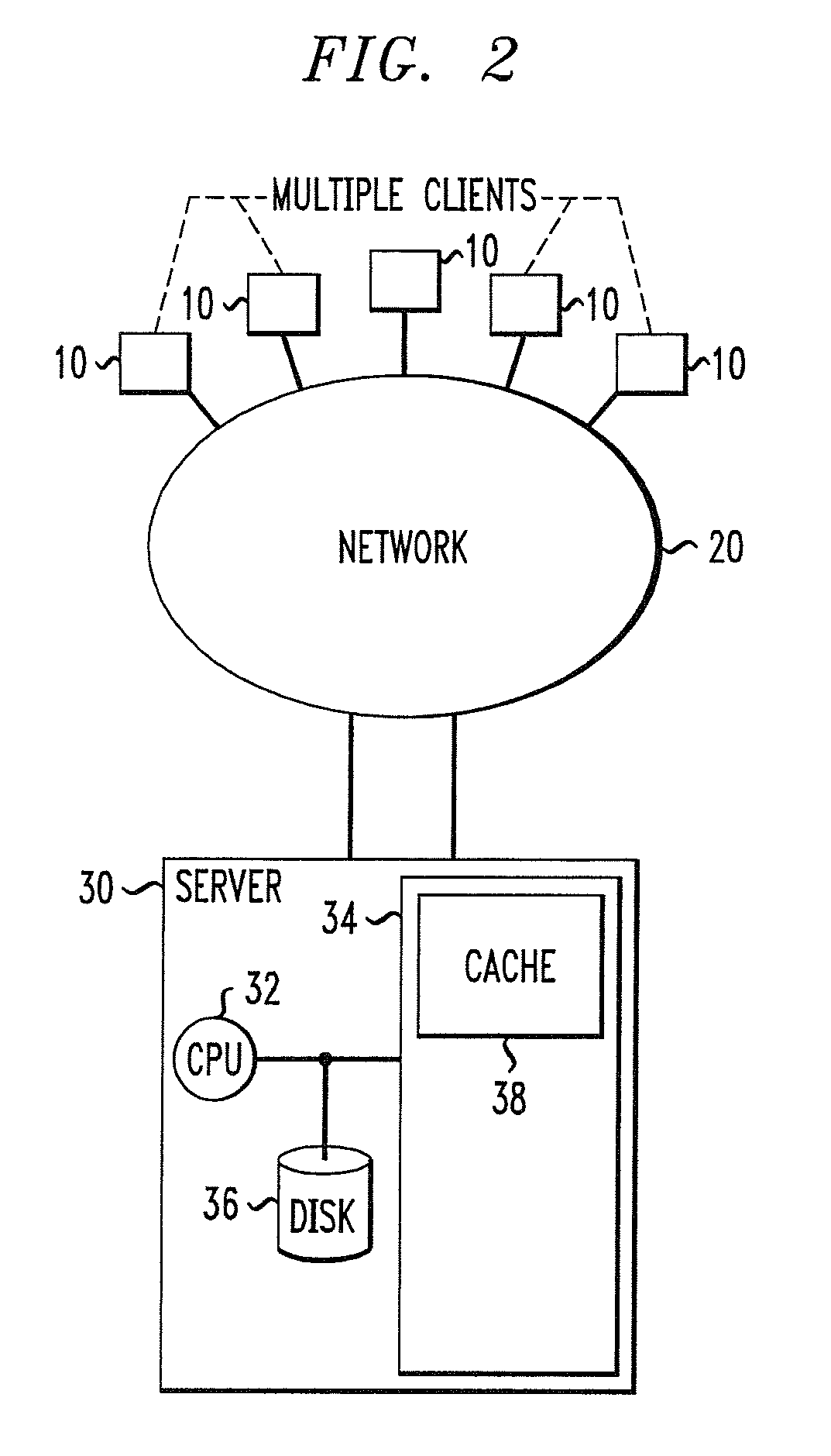Methods and apparatus for outlier detection for high dimensional data sets
a high-dimensional data and outlier detection technology, applied in the field of outlier detection in high-dimensional data, can solve the problems of difficult quality of outliers picked by such a method, difficult to effectively use these measures, and disadvantages of treating the entire data in a uniform way
- Summary
- Abstract
- Description
- Claims
- Application Information
AI Technical Summary
Benefits of technology
Problems solved by technology
Method used
Image
Examples
Embodiment Construction
[0023]As mentioned above, the present invention provides a new technique for outlier detection which finds outliers by observing the density distributions of projections from the data. Intuitively, this new definition considers a point to be an outlier, if in some lower dimensional projection, it is present in a local region of abnormally low density.
[0024]Specifically, the invention defines outliers for data by looking at those projections of the data which have abnormally low density. Thus, a first step is to identify and mine those patterns which have abnormally low presence which cannot be justified by randomness. Once such patterns have been identified, then the outliers are defined as those records which have such abnormal patterns present in them.
[0025]In order to find such abnormal lower dimensional projections, we need to define and characterize what we mean by an abnormal lower dimensional projection. An abnormal lower dimensional projection is one in which the density of ...
PUM
 Login to View More
Login to View More Abstract
Description
Claims
Application Information
 Login to View More
Login to View More - R&D
- Intellectual Property
- Life Sciences
- Materials
- Tech Scout
- Unparalleled Data Quality
- Higher Quality Content
- 60% Fewer Hallucinations
Browse by: Latest US Patents, China's latest patents, Technical Efficacy Thesaurus, Application Domain, Technology Topic, Popular Technical Reports.
© 2025 PatSnap. All rights reserved.Legal|Privacy policy|Modern Slavery Act Transparency Statement|Sitemap|About US| Contact US: help@patsnap.com



